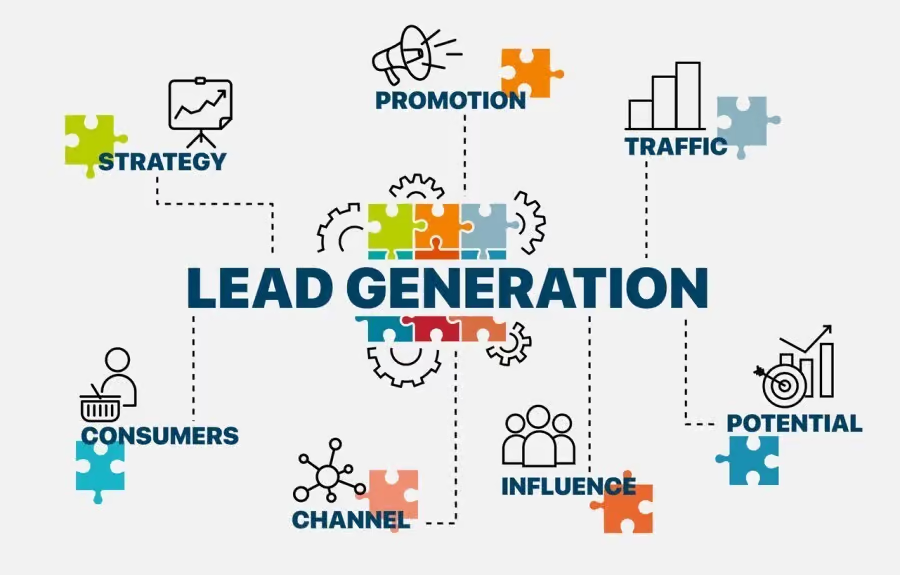What is Lead Conversion and Why is It Important?
Lead conversion is the process of turning website visitors into leads or customers. It is critical to a successful website because it allows businesses to capture leads, assess their interests, and convert them into paying customers. The higher your lead conversion rate, the more sales and profits you will generate.
In order to do this effectively, businesses must optimize their websites for increase the lead conversion rate. This entails making sure they have an effective lead generation system in place and that all pages on the site are optimized for maximum efficiency. Lead conversion optimization ensures that businesses maximize their potential customer base by providing a better user experience and increasing their chances of capturing more leads. Lead conversion involves several activities, such as website lead generation (i.e. collecting visitor data), email marketing campaigns, content marketing strategies, and other tactics to convert prospects into customers. By optimizing your website for lead conversion, you can ensure that you get the most out of your visitors and maximize your return on investment (ROI).

Reasons Why Your Website Isn’t Converting Leads:
- Poor Navigation & Unintuitive Design
Poor navigation and unintuitive design can be one of the biggest obstacles to user experience. Websites that are difficult to navigate, unorganized or lack clarity in their design can often make users feel frustrated and overwhelmed. Website navigation should be clear, simple, and organized so that visitors can find what they are looking for quickly and easily. Also, user-friendly design should be employed to ensure the website is easy to use and visually appealing. With proper navigation and intuitive design, websites will provide an excellent user experience which will lead to increased engagement and conversions.
To create a user friendly website, web designers should adhere to certain best practices when it comes to navigation and design. This includes creating intuitive menus that are easy to understand, ensuring good visibility on all devices, making sure all links are working properly, and ensuring a consistent visual style throughout the site. Additionally, websites should be regularly tested to ensure that all functionality is as expected for the users. By following these guidelines, web designers can create sites with smooth navigation and an intuitive design that will provide a positive experience for all users.
2. Low-Quality Content
Low-quality content can be a major obstacle for any organization or individual trying to achieve their content marketing goals. It not only reduces user engagement, but also affects the overall credibility of the brand. It can lead to a decrease in SEO rankings, poor user experience and ultimately, decreased traffic. Content creation tips are essential to ensure that you are creating content that is engaging and relevant for your target audience.
It is important to have a well-defined content strategy in place before you start creating your content. This will help you avoid low-quality content and better target your audience. A good strategy should include research into the subject matter, a plan on how to create and distribute the content, and metrics for measuring success. By following these tips, you can create quality content that will engage your readers and attract more customers.
- No Calls to Action Placed Strategically on the Site
Calls to action are an important part of a website’s success. It encourages visitors to take action or purchase products and services. So, it is essential to place them strategically in order to ensure that visitors are aware of what they should do next. Placing calls to action strategically in the right places on the website is key to maximum conversions and sales.
When placing calls to action, it’s important to consider how visitors interact with the site. Location and design should be taken into account when determining where CTA’s should be placed. Additionally, it’s necessary to consider other elements such as color, font size, and placement relative to other page elements. By following call-to-action best practices and implementing proper placement strategies, businesses can increase their conversion rates significantly.
- Not Optimizing for Mobile Devices
In today’s digital age, more and more people are accessing the internet through their mobile devices. If your website isn’t optimized for mobile devices, you could be missing out on a large portion of your target audience.
Mobile optimization involves ensuring that your website is easy to navigate on smaller screens, loads quickly, and has responsive design elements. If your website takes too long to load or is difficult to navigate on a mobile device, visitors are more likely to leave before they’ve even had a chance to explore your site.
To optimize your website for mobile devices, consider implementing responsive design elements, compressing images and videos, and minimizing the number of pop-ups and banners on your site. You can also use Google’s Mobile-Friendly Test tool to see how your website performs on mobile devices and identify areas for improvement.
5. Lack of Credibility & Trustworthiness on the Site
When visitors come to your website, they want to know that they can trust you and your brand. If your website lacks credibility and trustworthiness, visitors may be hesitant to provide their personal information or make a purchase.
To establish credibility and trustworthiness on your website, consider adding social proof elements such as customer testimonials, case studies, and reviews. You can also display trust badges and certifications from reputable organizations, such as the Better Business Bureau or industry associations.
Another way to build trust with your visitors is to provide transparent information about your products or services, including pricing, shipping, and return policies. Make sure your contact information is easy to find and consider adding a live chat feature so visitors can get in touch with you quickly if they have any questions.
6. Too Many Pop-Ups
While pop-ups can be an effective way to capture leads, too many pop-ups can be overwhelming and annoying for visitors. If your website has too many pop-ups or if they appear too frequently, visitors may be more likely to leave without converting.
To avoid annoying your visitors with too many pop-ups, consider limiting the number of pop-ups on your site and ensuring that they are relevant and timely. For example, you could use exit-intent pop-ups to offer visitors a discount code or free resource before they leave your site.
You can also use pop-ups to segment your audience and offer personalized content or promotions based on their interests or behaviors. By using targeted pop-ups, you can improve the user experience on your site and increase your conversion rates.
7. You’re Targeting the Wrong Audience
If your website isn’t converting leads, it’s possible that you’re targeting the wrong audience. Before you can convert visitors into leads, you need to attract the right people to your site.
To ensure that you’re targeting the right audience, start by creating buyer personas that describe your ideal customer. This will help you understand their needs, pain points, and behaviours so you can create content and offers that resonate with them.
You can also use analytics tools to track the performance of your website and identify areas where you may be losing potential leads. For example, if you notice that visitors are leaving your site after visiting a particular page, you may need to optimize that page to better align with the needs of your target audience.
Conclusion:
This is important for businesses to increases customer satisfaction and ultimately leads to greater sales. By considering these features, you can reduce bounce rates and increase conversions and that ultimately helps you achieve your business goals.
